Today’s Current Affairs: 24th May 2025 for UPSC IAS exams, State PSC exams, SSC CGL, State SSC, RRB, Railways, Banking Exam & IBPS, etc
Table of Contents
Keezhadi Excavations:
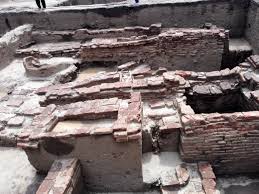
The Archaeological Survey of India (ASI) has asked Amarnath Ramakrishna, the archaeologist who led the Keezhadi excavations, to resubmit his excavation report after revisions.
- The Keezhadi excavation site is located near Madurai in Tamil Nadu, along the Vaigai River.
- It is a major urban Sangam-era settlement, estimated to date between the 5th century BCE and the 3rd century CE.
- It represents one of the most significant archaeological findings in Tamil Nadu since the Adichanallur site.
- Excavations reveal an urban, literate, and craft-oriented society, suggesting early urbanisation in South India independent of North Indian influences.
- The term ‘Sangam’ is derived from the Sanskrit word ‘Sangha’, meaning an assembly or association, and refers to Tamil literary academies under the Pandya kings.
- Sangam literature provides vital insights into ancient Tamil society, covering aspects like governance, economy, trade, war, social life, and agriculture.
- Key texts include:
- Tolkappiyam (oldest Tamil grammar),
- Pattupattu (Ten Idylls),
- Ettutogai (Eight Anthologies),
- Padinenkilkanakku (Eighteen Minor Works),
- The three great epics (Silappadikaram, Manimekalai, and Civaka Cintamani).
Autism Spectrum Disorder:

According to the CDC (USA), the prevalence of autism has risen from 1 in 36 children (2020) to 1 in 31 (2022).
- Autism Spectrum Disorder (ASD) is a neurodevelopmental condition caused by differences in brain development, affecting communication, social interaction, behaviour and learning patterns.
- Symptoms of ASD typically appear before the age of 3 years, though diagnosis is often delayed, particularly in low-awareness settings.
- People with ASD may display repetitive behaviours, narrow interests, and may have unusual learning styles or motor skills.
- ASD is not caused by a single factor. It results from a complex interaction of genetic and environmental influences.
- Genetics plays a strong role, with studies showing heritability estimates of up to 91% (Tick et al., JAMA, 2016).
- Environmental contributors such as advanced parental age, prenatal exposure to air pollutants, and maternal health are being studied, but no single environmental toxin has been conclusively proven to cause autism.
- Vaccines do not cause autism.
- This claim stems from a discredited study, and continued misinformation can lead to dangerous vaccine hesitancy.
Charaka and Sushruta:
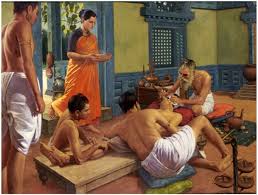
The Vice-President of India addressed a gathering during the unveiling of statues of Charaka and Sushruta at Raj Bhavan, Goa.
- Charaka, a court physician during the Kushan period, is considered the Father of Medicine in India.
- He revised the ancient Agnivesha Samhita into what became the Charaka Samhita, a foundational text of Ayurveda.
- Charaka Samhita covers topics such as physiology, diagnosis, prevention, and internal medicine.
- The text is part of the Bṛhat-Trayi (Great Trilogy) of Ayurveda, alongside the Sushruta Samhita and Ashtanga Hridaya.
- The Charaka Samhita was later expanded by Dṛḍhabala, making it an encyclopaedic treatise.
- Charaka emphasised ethics in medicine, highlighting the importance of physician conduct, diet, and preventive care.
- It remained authoritative for over two millennia, and was translated into Arabic, Latin, and other foreign languages, showing its global medical relevance.
- Sushruta, dating back to the 7th century BCE, is revered as the Father of Surgery and possibly the world’s first documented surgeon.
- He authored the Sushruta Samhita, which elaborates on over 300 surgical procedures, 120 surgical instruments, and various types of fractures and dislocations.
- Innovations include rhinoplasty (nasal reconstruction), skin grafting, cataract surgery, and caesarean sections.
- The Sushruta Samhita also integrates anatomical knowledge, surgical training, patient care, hygiene, and scientific observation.
- Sushruta’s teachings display principles of evidence-based medicine, centuries before modern systems emerged.
PM E-Drive Scheme : New Update

Under the PM E-Drive, ₹2,000 crore is allocated to set up 72,000 public EV charging stations across India.
- The PM E-DRIVE (Electric Drive Revolution in Innovative Vehicle Enhancement) scheme is a flagship initiative launched to accelerate electric mobility in India through demand incentives and charging infrastructure support.
- It aims to reduce transport-related carbon emissions, improve air quality and enhance energy security by decreasing fossil fuel dependency.
- The scheme has a total financial outlay of ₹10,900 crore and will be implemented from 2024 to 2026.
- Key Objectives and Scope
- To promote the adoption of EVs by supporting the purchase of electric vehicles (e-2Ws, e-3Ws, e-buses, e-ambulances, and e-trucks).
- To deploy a robust national EV charging grid to reduce range anxiety and ensure seamless mobility across cities and highways.
- To provide direct demand incentives through Aadhaar-authenticated e-vouchers sent to the buyer’s mobile number after EV purchase.
Self Reliant India (SRI) Fund Scheme:
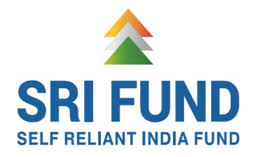
The Self Reliant India (SRI) Fund scheme, which supports MSMEs with equity infusion, has invested around Rs 10,979 crore in 577 MSMEs as of March 2025 since its launch.
- The Self Reliant India (SRI) Fund has been set up to infuse Rs. 50,000 crore as equity funding in those MSMEs which have the potential and viability to grow and become large units.
- Under this fund of Rs. 50,000 crore, there is a provision of Rs. 10,000 Crore from the Government of India and Rs. 40,000 Crore through Private Equity/Venture Capital funds.
- SRI fund operates through a mother-fund and daughter-fund structure for equity or quasi-equity investments.
- The SRI Fund is being implemented by NSIC Venture Capital Fund Limited (NVCFL), which is an Alternative Investment Fund (AIF) of Category II registered with SEBI.
- SRI fund is oriented to provide the funding support through NVCFL to the Daughter Funds for onward provision to MSMEs as growth capital, in the form of equity or quasi-equity, for the following:
- Enhancing equity/equity-like financing to MSMEs and listing of MSMEs on stock exchanges.
- Supporting faster growth of MSME businesses and thereby ignite the economy and create employment opportunities.
- Supporting enterprises which have the potential to graduate beyond the MASME bracket and become National/International Champions.
- Supporting MSSMEs, which help make India self-reliant by producing relevant technologies, goods, and services.
- The Daughter Funds shall invest at least 5 times the amount of capital contribution received from SRI Fund (net of fees and expenses) in MSMEs, covered under the Micro, Small & Medium Enterprises Development Act, 2006.
Niallia tiangongensis:
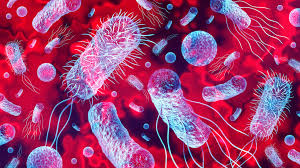
Chinese scientists have discovered a new species of bacteria named Niallia tiangongensis on board the Tiangong Space Station.
- The Tiangong Space Station, translating to ‘Sky Palace’, is a Chinese-owned and operated permanently crewed space station in Low Earth Orbit (LEO).
- It represents the third and final step of China’s Manned Space Program.
- The first module of the space station was launched in April 2021, following two precursor missions, Tiangong-1 and Tiangong-2.
- The station consists of a core module known as Tianhe, which connects two science modules, Wentian and Mengtian, as well as a planned space telescope module, Xuntian.
- Tiangong is much smaller than the International Space Station (ISS), with only three modules compared with 16 modules on the ISS.
- Tiangong is also considerably lighter than the ISS, which weighs about 400 tons (450 metric tons); the Chinese station is about 20% as massive.
- It can accommodate up to three astronauts at a time for six-month stays. It can also support six astronauts at a time during crew handovers.
- The aims of the Tiangong Space Station are to:
- Build a long-term, reliable space station in orbit.
- Guarantee the long-term health and safety of stationed astronauts.
- Provide conditions for scientific and technological experiments in space.
- The station serves as an in-orbit laboratory with 23 enclosed experiment racks, each covering a different proposed experiment in the fields of:
- Space life sciences and biotechnology
- Microgravity fluid physics and combustion
- Material science in space
- Fundamental physics in microgravity
- The space station also features platforms for exposed and unpressurised external experiments.
Santara (Sallekhana):

Recently a three-year-old girl in Indore reportedly died after being administered Santhara by a Jain monk, bringing the ancient Jain ritual of voluntary fasting unto death back into public and legal discourse.
- Santhara or Sallekhana is a Jain religious vow of voluntary fasting unto death, undertaken to purify the soul and attain moksha.
- Practiced in Jainism by both monks and laypersons under extreme conditions like terminal illness, old age, or famine.
- Features: Involves gradual withdrawal from food and water, Taken only with spiritual maturity and under religious supervision, Involves forgiveness, detachment, and spiritual reflection.
Guttala Sculptural Inscription:
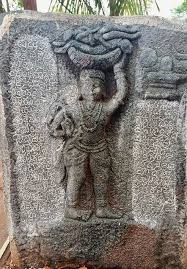
A 16th-century sculptural inscription found near Chandrashekara temple, Guttala (Haveri district, Karnataka), records the death of 6,307 people due to a drought in 1539 CE, making it India’s earliest epigraphic evidence of a humanitarian disaster.
Guttala Sculptural Inscription:
- Found near Chandrashekara temple, Guttala village, Karnataka.
- Written in Kannada script and language on a stone slab.
- Dated Saka 1461, August 18, 1539 CE.
- Records that 6,307 people died due to “bara” (drought).
- A local named Marulaih Odeya, son of Nanideva Odeya, buried the dead in baskets to earn merit for ruler Timmarasa Svami.
- Sculpture depicts Marulaih carrying a basket with dead bodies.
- Rare sculptural and textual record of a natural disaster in Indian history.
- Includes exact toll and social response.
- Depicts humanitarian act and local governance structure (mention of “seeme” – territorial unit).
- Offers visual iconography to complement textual epigraphy.
India has formally assumed the Chairmanship of the Asian Productivity Organization:
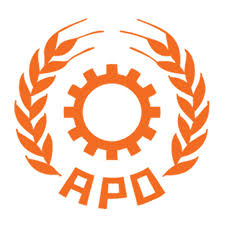
India has formally assumed the Chairmanship of the Asian Productivity Organization (APO) for the 2025–26 term during the 67th Governing Body Meeting.
- Asian Productivity Organization (APO) is a Tokyo-based intergovernmental body working to boost productivity across the Asia-Pacific region.
- Founded in 1961, with India as a founding member.
- Headquarters: Tokyo, Japan
- 21 member economies including India, Japan, Iran, Indonesia, Philippines, Singapore, South Korea, Vietnam, Bangladesh, and others.
- Objectives:
- Promote sustainable socioeconomic growth through enhanced productivity.
- Support inclusive, innovation-led development across industry, agriculture, services, and public sectors.
- Core Functions:
- Policy Advisory: Guides governments on national productivity strategies.
- Capacity Building: Organizes training, workshops, and research programs.
- Centres of Excellence: Supports innovation and excellence across member economies.
- Green Productivity: Promotes environmentally sustainable practices.
- Digital and Innovation Ecosystem: Enhances regional cooperation on digital productivity and entrepreneurship.
National Centre for Polar and Ocean Research: In News
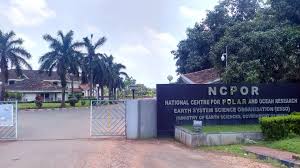
The Union Ministry of Earth Sciences (MoES) inaugurated “Sagar Bhavan” and “Polar Bhavan” at the National Centre for Polar and Ocean Research (NCPOR), Goa.
- Established in 1998 as an autonomous R&D institute, under the Ministry of Earth Sciences (MoES).
- Formerly known as the National Centre for Antarctic and Ocean Research (NCAOR).
- Location: Vasco da Gama, Goa.
- Nodal agency for Planning and executing polar expeditions in the Antarctic, Arctic, Southern Ocean, and Himalayas.
- Coordinating scientific research and logistics in polar and oceanic domains.
- Also works on strategically vital projects like: Mapping of Exclusive Economic Zone (EEZ), Continental shelf surveys, and the Deep Ocean Mission.
- Maintains a Research Advisory Committee (RAC) for scientific guidance.
- Polar Bhavan, the largest facility on the NCPOR campus, covers 11,378 sq. m and was built at a cost of ₹55 crore.
- It includes state-of-the-art laboratories, 55 rooms for scientists, conference halls, a library, and the new Science on Sphere (SOS) 3D earth systems visualisation platform.
- It will house India’s first Polar and Ocean Museum for public scientific outreach.
- Sagar Bhavan spans 1,772 sq. m and costs ₹13 crore.
- It includes two -30°C ice core laboratories, +4°C storage units for archiving sediment and biological samples, and a Class 1000 metal-free clean room for trace metal and isotope analysis.
- NCPOR maintains India’s research presence in: Antarctica (Stations: Maitri and Bharati), Arctic (Station: Himadri), and Himalayas (Station: Himansh).
- India’s Arctic Policy (2022) and Indian Antarctic Act (2022) were cited as key legislative frameworks for science-led and environmentally responsible polar engagement, aligned with international obligations.
Prime Minister inaugurated 103 Amrit Bharat railway stations:
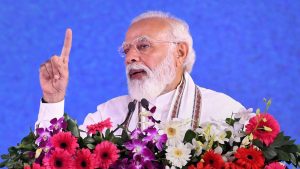
Prime Minister inaugurated 103 Amrit Bharat railway stations across 86 districts in 18 States/UTs via video conference from Deshnoke, Rajasthan.
- A centrally sponsored initiative to redevelop and modernize 1,275 railway stations across India with a long-term, phased vision.
- Launched In: 2022 by the Ministry of Railways, Government of India.
- Objectives:
- Enhance passenger experience through improved infrastructure.
- Promote heritage preservation, tourism, and regional economic development.
- Integrate stations into multimodal urban mobility hubs.
WHO Recognises 4 Nations for Trans Fat Elimination:

The World Health Organization (WHO) recognised Austria, Norway, Oman, and Singapore for eliminating industrially produced trans fats from their national food supply.
- Trans fats (trans-fatty acids) are unsaturated fats that undergo hydrogenation, turning liquid oils into solid fats.
- Naturally occurring: Found in red meat and dairy (in small amounts).
- Industrially produced: Found in partially hydrogenated oils (PHOs) used in processed foods.
- Sources of Trans Fat:
- Fried & processed foods: Biscuits, cakes, margarine, vanaspati ghee
- Baked goods: Pies, pastries, refrigerated dough
- Cooking fats: Shortening, stick margarine
- Health Hazards of Trans Fats:
- Raises Bad Cholesterol (LDL): Trans fats increase low-density lipoprotein (LDL) levels, which leads to cholesterol buildup in arteries.
- Lowers Good Cholesterol (HDL): They simultaneously reduce high-density lipoprotein (HDL) levels, which normally helps remove excess cholesterol from the bloodstream.
- Triggers Arterial Blockage: The imbalance between LDL and HDL causes plaque formation in arteries, narrowing them and leading to stroke or coronary heart disease.
- Increases Obesity and Diabetes Risk: Being energy-dense (9 kcal/g), trans fats promote weight gain, and prolonged consumption can impair insulin sensitivity, triggering type 2 diabetes.
- Massive Global Health Impact: WHO (2024) estimates 278,000 annual deaths from trans-fat consumption, accounting for nearly 7% of cardiovascular-related mortalities worldwide.
- Target:
- Global Policy (WHO): Launched in 2018, WHO aims to eliminate industrial trans fats by 2025, targeting 90% global and 70% regional population coverage.
- India’s Policy: Since January 2022, India enforces a <2% trans-fat limit in oils/fats under FSSAI’s 2021 Regulations, aligning with WHO best practices.
Fitch Raises India’s Medium-Term Growth Outlook to 6.4% till FY26:
Fitch Ratings has upgraded India’s medium-term GDP growth projection to 6.4% till FY2026, citing improved labour force participation and reduced pandemic-related economic scarring. This revision comes even as Fitch trims growth forecasts for most other emerging markets, with countries like China facing deeper structural challenges. The upgraded outlook reflects India’s resilience and ongoing structural shifts in employment and productivity.Fitch Ratings revised India’s medium-term GDP growth potential upward from 6.2% to 6.4%. The development holds significance as India stands out among emerging markets, where the average growth estimate has declined. This reflects a positive reassessment of India’s economic fundamentals, particularly in terms of labour dynamics.
RBI Sells Nearly $400 Billion in FY25:
The Reserve Bank of India (RBI) sold a record $398.71 billion worth of foreign currency on a gross basis in FY2024-25. This marks the highest-ever intervention by the central bank, reflecting its aggressive stance amid geopolitical uncertainty and the fear of global economic disruption, particularly linked to potential shifts in US leadership and trade policy.The Reserve Bank of India released data showing an all-time high gross sale of foreign currency during FY2024-25, largely triggered by rupee depreciation and heightened global economic risks. The data highlights India’s strategic forex management efforts and the substantial financial cost associated with defending the currency.
Centre Launches Nationwide Drive to Make Educational Institutions Tobacco-Free:
The Ministry of Education has launched a nationwide enforcement drive aimed at making educational institutions tobacco and substance-free zones. This move comes as part of efforts to protect the country’s youth from the harmful effects of tobacco, alcohol, and drug abuse, with active participation expected from both educational and law enforcement authorities. The Department of School Education and Literacy (DoSEL) has issued a strong directive to States and Union Territories (UTs) to strictly enforce tobacco-free guidelines around educational institutions. This follows the 8th Apex Committee meeting of the Narco-Coordination Centre (NCORD) held on May 15, 2025, which emphasized the urgent need to shield young students from substance abuse.
ECI Introduces Mobile Deposit Facility at Polling Stations to Aid Voter Convenience:
The Election Commission of India (ECI) has introduced two key reforms: a Mobile Deposit Facility outside polling stations and the rationalisation of canvassing norms. These measures are designed to address practical challenges faced by voters and to maintain order and secrecy inside polling booths, especially in light of the rising use of mobile phones and increased poll-day activities.The Election Commission of India announced two new poll-day reforms: Establishment of Mobile Deposit Facility just outside polling stations. Revision of canvassing norms in accordance with the Representation of the People Act, 1951 and Conduct of Elections Rules, 1961. These steps aim to balance the needs of voter convenience with the legal and procedural requirements of a free and fair election process.




